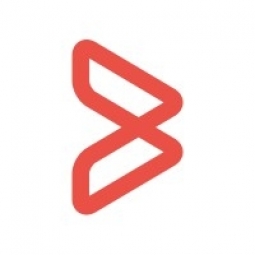Customer Company Size
Large Corporate
Region
- America
Country
- United States
Product
- Compuware Strobe
Tech Stack
- SQL
Implementation Scale
- Enterprise-wide Deployment
Impact Metrics
- Productivity Improvements
- Cost Savings
Technology Category
- Analytics & Modeling - Real Time Analytics
Applicable Industries
- Finance & Insurance
Applicable Functions
- Business Operation
Use Cases
- Process Control & Optimization
Services
- System Integration
About The Customer
Comerica Incorporated is a financial services company headquartered in Dallas. It offers three strategically aligned business segments for its customers: business banking, retail banking and wealth and institutional management. The company operates a multistate network of more than 500 branch, lending and investment offices. At the heart of the company’s operations is the Comerica Online Documents (COLD) application, a vendor-supplied system that archives, restores and retrieves account statements and other documents electronically. The company had been backing up a month’s worth of statements on a mainframe disk drive, with older statements backed up on tape. To improve application response time, Comerica moved a year’s worth of account statements from tape to the mainframe disk drive.
The Challenge
Comerica Incorporated, a financial services company headquartered in Dallas, offers three strategically aligned business segments for its customers: business banking, retail banking and wealth and institutional management. It is imperative that the online documentation system that backs up account and document withdrawals, deposits and other account activity works efficiently for a multistate network of more than 500 branch, lending and investment offices. At the heart of the company’s documentation process is the vendor-supplied Comerica Online Documents (COLD) application that archives, restores and retrieves these types of reports electronically. When this application was originally installed, the company started backing up a month’s worth of statements on a mainframe disk drive. Any request for account statements from over a month, however, was backed up on tape. To improve application response time, Comerica moved a year’s worth of account statements from tape to the mainframe disk drive. The company expected to see better response time, but that wasn’t the case. The system took the same amount of time to retrieve the account statements as it did before its IT team implemented the change.
The Solution
Reimann’s team attended an on-site Compuware class demonstrating how Compuware Strobe measured online activity in CICS environments. Although Comerica was already using Strobe to measure batch activity, it had not been used widely for online environments. Strobe’s ability to drill through multiple layers of a CICS application to measure actual online activity proved to be a valuable capability for Reimann’s team. Using the Strobe profile report, the team drilled down through the SQL to find which program statement consumed too much CPU. In this case, the culprit was in the database. A closer look at the table structure revealed a Report Date, Report Name sequence, the exact opposite of the actual call. In using Strobe, the IT team at Comerica was able to conserve CPU usage. “Strobe showed us that one SQL statement was eating up a good 60 percent of CPU usage,” said Reimann. “After we fixed the problem, we noticed more than a 25 percent reduction in CPU usage.”
Operational Impact
Quantitative Benefit

Case Study missing?
Start adding your own!
Register with your work email and create a new case study profile for your business.
Related Case Studies.

Case Study
Real-time In-vehicle Monitoring
The telematic solution provides this vital premium-adjusting information. The solution also helps detect and deter vehicle or trailer theft – as soon as a theft occurs, monitoring personnel can alert the appropriate authorities, providing an exact location.“With more and more insurance companies and major fleet operators interested in monitoring driver behaviour on the grounds of road safety, efficient logistics and costs, the market for this type of device and associated e-business services is growing rapidly within Italy and the rest of Europe,” says Franco.“The insurance companies are especially interested in the pay-per-use and pay-as-you-drive applications while other organisations employ the technology for road user charging.”“One million vehicles in Italy currently carry such devices and forecasts indicate that the European market will increase tenfold by 2014.However, for our technology to work effectively, we needed a highly reliable wireless data network to carry the information between the vehicles and monitoring stations.”

Case Study
Safety First with Folksam
The competitiveness of the car insurance market is driving UBI growth as a means for insurance companies to differentiate their customer propositions as well as improving operational efficiency. An insurance model - usage-based insurance ("UBI") - offers possibilities for insurers to do more efficient market segmentation and accurate risk assessment and pricing. Insurers require an IoT solution for the purpose of data collection and performance analysis

Case Study
Smooth Transition to Energy Savings
The building was equipped with four end-of-life Trane water cooled chillers, located in the basement. Johnson Controls installed four York water cooled centrifugal chillers with unit mounted variable speed drives and a total installed cooling capacity of 6,8 MW. Each chiller has a capacity of 1,6 MW (variable to 1.9MW depending upon condenser water temperatures). Johnson Controls needed to design the equipment in such way that it would fit the dimensional constraints of the existing plant area and plant access route but also the specific performance requirements of the client. Morgan Stanley required the chiller plant to match the building load profile, turn down to match the low load requirement when needed and provide an improvement in the Energy Efficiency Ratio across the entire operating range. Other requirements were a reduction in the chiller noise level to improve the working environment in the plant room and a wide operating envelope coupled with intelligent controls to allow possible variation in both flow rate and temperature. The latter was needed to leverage increased capacity from a reduced number of machines during the different installation phases and allow future enhancement to a variable primary flow system.

Case Study
Automated Pallet Labeling Solution for SPR Packaging
SPR Packaging, an American supplier of packaging solutions, was in search of an automated pallet labeling solution that could meet their immediate and future needs. They aimed to equip their lines with automatic printer applicators, but also required a solution that could interface with their accounting software. The challenge was to find a system that could read a 2D code on pallets at the stretch wrapper, track the pallet, and flag any pallets with unread barcodes for inspection. The pallets could be single or double stacked, and the system needed to be able to differentiate between the two. SPR Packaging sought a system integrator with extensive experience in advanced printing and tracking solutions to provide a complete traceability system.

Case Study
Transforming insurance pricing while improving driver safety
The Internet of Things (IoT) is revolutionizing the car insurance industry on a scale not seen since the introduction of the car itself. For decades, premiums have been calculated using proxy-based risk assessment models and historical data. Today, a growing number of innovative companies such as Quebec-based Industrielle Alliance are moving to usage-based insurance (UBI) models, driven by the advancement of telematics technologies and smart tracking devices.
Case Study
Enhancing Security and Compliance in Remitly's Global Money Transfer Service with Fastly
Remitly, an online remittance service, was faced with the challenge of securing its proprietary global transfer network. The company needed a security solution that could meet PCI requirements and protect customers' sensitive transactions through its mobile application. The solution had to be capable of defending against new and emerging attack types without impacting performance. Remitly also had to deal with irregular traffic patterns, such as a sudden spike in account transfers from a small network segment on the Pacific coastline of South America. The company needed to determine in real time whether such traffic indicated an attack or valid requests. A traditional web application firewall (WAF) would not be able to distinguish this traffic, potentially leading to customer frustration if the IP was blacklisted.







